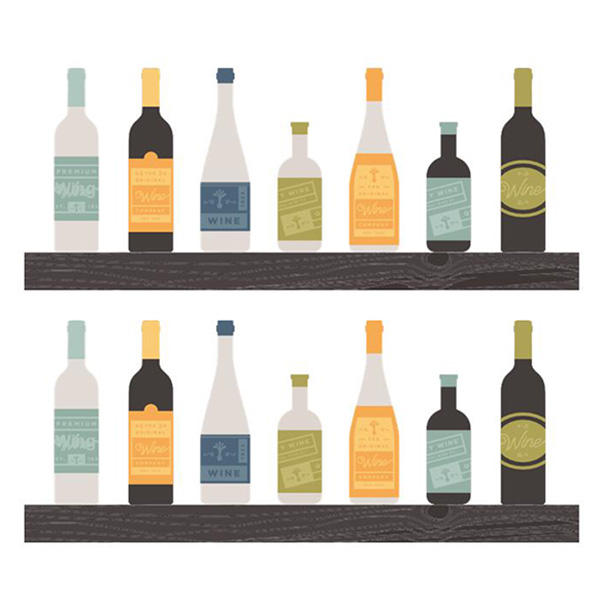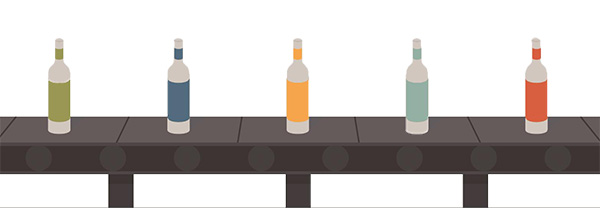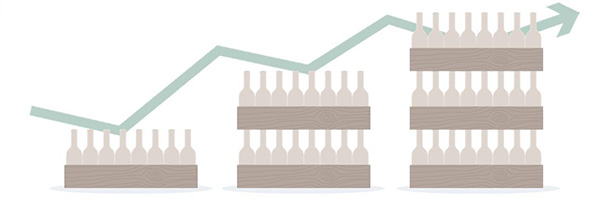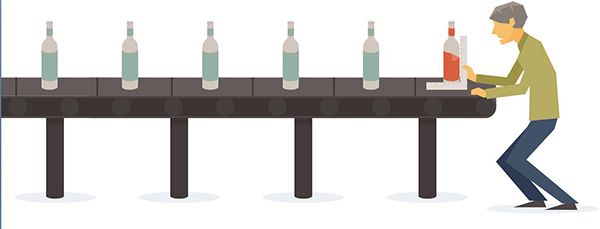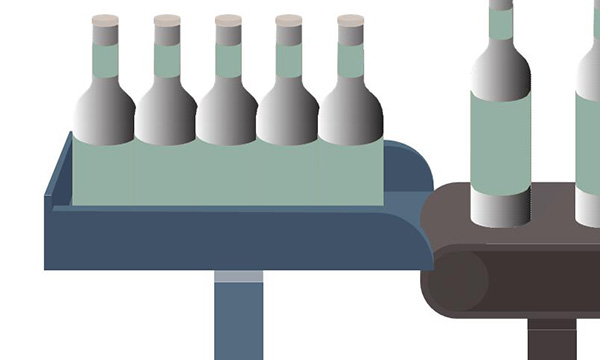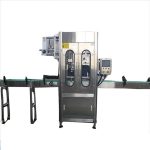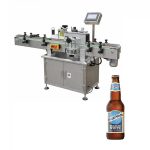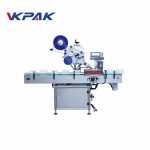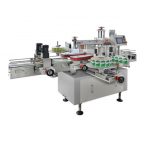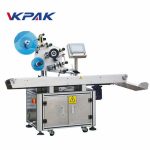As the wine industry continues to grow — averaging a substantial 5.7% growth from 2014-2019 — winemakers and winery owners need innovative ways to make their brands stand out as competition continues on an upward trajectory. Creative and unique wine labels and wine can labels are just one way to gain attention and create distinction. The good news is that there are a variety of labeling technologies that will help make a visual impact on wine enthusiasts everywhere.
Winemaking focuses on the drinker's experience by creating complex and interesting flavors, and in some cases, using old-world recipes. It's not just exciting flavors that are growing in popularity, so are organic wines, sugar-free wines, and low carb wines. With old and new players in the market — not to mention the growing wine subscription trend — it's even more critical for wineries to brand their wine in a way that will stick out to customers and keep them coming back for more.
Current Trends
As the number of wineries increase, so do production trends, bottling capabilities, and labeling technology.
The forecasts for the wine industry look bright. However, the consumer focus is expected to shift slightly to a preference of quality over quantity, meaning brand identity and packaging are significant success drivers.
In a recent wine-tasting survey, several wine bottles ranging from $10-150 in price were shared with participants. Here’s what was discovered.
• 82% of respondents chose a wine bottle based on the appearance of the label
• 65% were influenced by how expensive they thought the wine looked
• 58% cared about the wine region
• 53% were impacted by the shape and color of the bottle
• 46% prefer to purchase something they’ve enjoyed in the past
• 42% preferred a vintage wine
According to the survey results, it’s clear that the way wine bottles look matters to consumers. Whether a great looking label means fun and quirky or elegant and sophisticated might depend on your target market— but either way, your wine bottle should capture attention and communicate quality. That means your wine label needs the right design — and must be properly and consistently adhered to ensure that your wine bottle looks its best both online and on the shelf. After all, your wine label only has 1.5 seconds to make an impact.
To capture the attention of wine shoppers, communicate your product’s high quality at a glance. You can do that by developing a great wine label design that intrigues wine enthusiasts and compels them to pick your wine. Here are some design elements to consider.
• Think about the color of your bottle, the color of your wine, and the color of your label. What emotions do you want to convey? Bright colors evoke cheerfulness, energy, and boldness. Muted colors suggest sophistication and subtlety. Dark colors promise rich flavors and intrigue. You might even consider juxtaposing a bright label on a dark bottle for a high-contrast effect that visually pops.
• Your font choices and label material count, too. Is the look you’re going for minimalist, elegant, vintage, modern, or edgy? You’ll want to pick a typeface that sets the right tone, choose interesting artwork, and be sure to select a label texture that supports your brand and your wine’s character.
• Consider using uniquely shaped wine labels and packaging. Maybe even go the extra creative mile and tie it all together with a themed design, making your bottle, label, cap, and shipping box coordinate — or if you have the financial wiggle room, commission custom wine labels.
• Here are unhelpful common words and phrases that serve no useful purpose on a wine label and should be ignored.
After you’ve nailed the wine bottle label design, make sure that your labeling process is optimized, ensuring that every single bottle has a perfectly placed label.
Types Of Labeling Equipment
Which labeling machine will allow you to make more wine in less time? Ready to Ask “up” your wine labeling game? Investing in a wine labeling machine that will help you ramp up production while maintaining quality may be just what you need to keep up with the competition.
Wineries have several bottle and canned wine labeling options. In general, label applicator machines come in manual, semi-automatic, and automatic models. Knowing label application needs and goal production speed will help narrow down the choices.
Manual labeling machines require workers to individually load and apply each label.
Semi-automatic labeling machines are operated by a hand or footswitch. An employee loads the bottles onto the conveyor then presses a button to apply the labels. This method is faster and more consistent than manual hand labeling.
In many cases, a semi-automatic, wrap-around labeling machine is the best option for labeling bottled wine because it allows you to ramp up from small-batch winemaking to a fully-automatic, in-line labeler machine over time without having to overhaul your equipment or bottling line.
Automatic labeling machines have rotary and in-line options. Both are quicker and more accurate than manual and semi-automatic labelers. In-line automatic label machines provide a massive leap in productivity and efficiency. Once wine bottles or cans are filled, they can be continuously fed to the labeling machine, resulting in roughly 150 labeled products per hour. Rotary label machines are at the high end of the spectrum, running up to 500 labels per hour and providing ultimate label placement control and consistency.
Automatic labeling equipment ranges in capability and price. Choose one that not only fits your current operational needs but can scale with your needs as you grow.
The Importance Of Labeling Equipment
No matter how fast you’re able to bottle and label your wine, overall output will be limited by the speed at which you can package it and get it to market. In this process, one major challenge experienced by many wineries is the printing and application of labels.
Bottle labeling machines come in a range of prices, which often seems overwhelming to winery owners operating on a limited budget. However, the addition of efficient labeling equipment can increase productivity dramatically and pay for itself quickly by ramping up output immediately.
Efficiency
Typically most wineries start without a huge upfront capital investment, so to begin production, they have to hand label each wine bottle.
However, the addition of one semi-automatic labeling machine, tabletop or modular, can increase productivity by almost 500%, allowing up to 150 bottles per hour to be labeled. These smaller labelers are more affordable for new or small wineries. These options also work better if you need to get monthly wine subscription box orders out the door on time consistently.
Fully-automatic in-line labeling machines are physically larger and a little more expensive, but they can label up to 500 bottles per hour. This efficiency increase allows wineries to fill more bottles without getting backed logged at the labeling stage.
As increasingly more wine leaves the bottling line and hits the market, the labeling equipment will more than justify the investment.
Quality
The use of semi-automatic or fully-automatic labeling equipment gives a winery the ability to place a well-designed label accurately every time. And we all know that a great label that’s applied evenly and precisely is a crucial marketing tool.
Label machines are faster and offer consistent placement with fewer errors than the manual hand labeling process. The best labeling equipment includes stabilizers that ensure the label is placed evenly and in the same location over and over without movement vertically or horizontally.
Cost Vs. Value
While the upfront cost of purchasing or leasing new labeling equipment may seem daunting, it’s essential to evaluate all of the cost factors that affect your winery.
For instance, the one-time purchase of labeling equipment will be significantly less than the cost of hiring a full-time employee to apply labels to bottles or cans. If you already have workers attaching labels, automating your labeling process will free them up to do more pressing or profitable tasks.
Another important part of the cost equation is the reduction of wasted and defective products coming off the line. Labeling equipment is consistent and reliable, so human error is eliminated and fewer labels are misplaced, which saves money. There is something to understanding efficiency and cost savings versus the actual cash price of the equipment. Ultimately, the value of the equipment is greater than the cost in many significant ways.
Evaluating Your Setup
Before making any decisions about the type of label applicator machine you want to purchase, evaluate your current setup, and determine what role the labeler machine will play in your bottling line. It's also critical to establish parameters that will determine the size and type of labeling machine you need. This will help you choose a wine labeler that meets your needs, fits seamlessly into your current operation, and makes your process more efficient.
Your Production Run
To properly evaluate your needs, clearly identify your labeling and production goals.
Start by deciding the quantity and speed that you want your product to move through the line. Label machines come in different speed ranges, so choose one that fits the speed that your line can maintain.
You'll also need to consider the potential downtime that could occur as you change labeling applications (e.g., moving from hand labeling to a semi-automatic machine).
Any wine labeling machine you choose will come with pros and cons, so look for a labeler that will be simple for you to set up, use, and maintain.
Space And Equipment
Once you have clear goals in mind for the amount of wine that you will be pushing through your line and at what speed, the next step is to find equipment that will fit into the space you have and be easily accessible. Other considerations include existing equipment compatibility and overall production line design.
Your production line includes a variety of machines, such as fillers, cappers or corkers, and labelers. For the sake of efficiency, it is best to purchase a labeling machine that is compatible with the equipment that you already have in your line to prevent problems. This is also an opportunity for you to decide whether you want your labeling machine to fit in-line with your current machinery, or if you would prefer a freestanding labeler.
You should choose a labeler that can keep up with your filling and sealing machines as well as scale with your company as it grows.
Container & Label Considerations
Most wineries still prefer to use glass bottles for their wine. However, glass bottles can be expensive and heavy. Aluminum cans, a popular trend in the economy wine sector, are lighter and more cost-effective. While most premium wineries believe the aesthetics and class factor of a glass bottle beats an aluminum can every time. But, according to wine drinkers, the packaging doesn’t make a difference in the way a wine tastes.
According to foodandwine.com, a blind taste test found that when 86 adults were given identical wines poured into a cup, one from a bottle and one from a can, 48.5% preferred the bottled version compared to 45.3% who preferred the canned version (with 5.8% showing no preference).
Regardless of your brand’s preference, once you determine what type of container you are going to use for your wine, it’s time to decide the wine label size, style, and placement. You can choose from front and back labels, wrap-around labels, or shrink sleeve labels.
If you know that your bottle or can will have an unusual shape or a distinctive taper, you will need to find a labeling machine that can properly affix labels to those unique dimensions. Labeling machines come in a variety of sizes and types but are not necessarily universal to all label applications.
Quality Containers & Labels
For a sharp, professional appearance, be sure to use high-quality materials. While the right labeler can do a great job labeling your cans and bottles, if the containers being used aren't premium, they can cause issues that make your product look bad.
No matter what you choose, be sure the containers are consistent. Imperfections and inconsistencies in the size and shape can cause your label machine to misread where the labels need to be placed. Inspect your containers regularly for any signs of poor quality so that you can address them before they are filled and improperly labeled.
A randomized but beneficial way to test the consistency of a batch of cans or bottles is with a "square test." To do this, place your can or bottle against a straight edge or ruler and slowly rotate it. If there are any shape anomalies, you will see gaps appearing between the container and the straight edge. These minor changes in shape can be enough to impact your labels adhesiveness and appearance.
Inconsistencies can create bubbles beneath the label. This can also affect shrink sleeve labels.
Label quality is another factor that will determine your overall results. Labels come in many different materials and can use a variety of glues or adhesives when applied to your containers. Poor quality labels are susceptible to tearing, bubbling, smearing, and other label performance malfunctions. Choose a well-known and trusted label brand, and give some thought to whether you prefer a paper or synthetic product.
Remember, poorly designed and applied labels will be easily spotted by wine enthusiasts who appreciate all aspects of wine culture, including the packaging.
Choosing a Labeling Equipment Partner
Choosing the right labeling equipment for your wine will depend on more than just the machine's functionality. When you purchase from a labeling equipment manufacturer or distributor, you also begin an ongoing partnership with them. Here are a few things to consider as you choose a labeling partner.
Parts & Service
Parts
Naturally, all equipment is subject to some rate of failure when it's used hard. It's imperative that your labeling machine manufacturer has spare parts on hand and that they're readily available. The longer your machine is down, the less product you can get out of the door —
and time is money.
Be sure to ask your labeling equipment provider if any parts are known to wear out and what the wait time is for replacements. This will allow you to plan for any maintenance or repairs that will need to be done without impacting your regular production time.
Service
The key to keeping your wine line running smoothly is to ensure that your labeling equipment is being well maintained and serviced throughout its life. The manufacturer of your labeling machine should be available to answer any of your questions or concerns and assist you in solving minor problems.
The best way to find a reputable dealer is to ask for recommendations within the wine community. As you look into labeling equipment dealers, consider the timeliness of their responses, whether their solutions are trustworthy, and if they're able to provide ongoing upgrades and continuous support. All of these will be important as your operation begins to grow.
Quality
High-quality products should be the goal of every manufacturer. However, not all companies follow the same set of standards.
To ensure that you are getting the best value for your money, ask your dealer a few questions about their quality control procedures for parts, repairs, and new machines. For instance, find out how they test machines before pre-sale and ask what type of inspections are done on used and refurbished machinery before they resell them.
The investment you make today into labeling equipment for your winery is going to depend on the support and customer care of the equipment manufacturer long term. As their customer, you want to know that they stand behind their products by providing thorough and helpful answers to your questions, make parts easy to get, and adhere to high-quality standards for all of their equipment, new or used. All of these factors will have an impact on how well your labeling machine performs beyond those first few thousand bottles, and as your wine operation expands.
Conclusion
As you move toward increasing your wine production with professional labeling equipment, keep in mind all of the decisions you will need to make.
• Evaluate your current production line and determine the number of bottles or cans that need labeling, as well as any space and design limitations.
• Once you've set some production goals and have an idea of how you are going to integrate a new piece of labeling equipment, it is time to go shopping. Purchasing a labeling machine will require you to compare the different options, including semi-automatic, fully-automatic, tabletop, in-line, or rotary. You'll also need to consider your materials (glass bottle, aluminum can, vinyl labels, gloss paper labels, etc.) to ensure that the labeling machine you choose will perform well.
• Remember that the labeling equipment you choose will also require ongoing maintenance and care to stay operational. You should contact a reputable dealer and get information about their service contracts and the availability of parts so that you will have the resources needed to keep your new machine in working order.
The effective use of automated labeling technology offers significant improvements in productivity and output for wineries as a whole.
However, finding the right labeling machine is the key. Make sure to evaluate all potential labeling machines for quality, speed, and reliability before you make a purchase.
